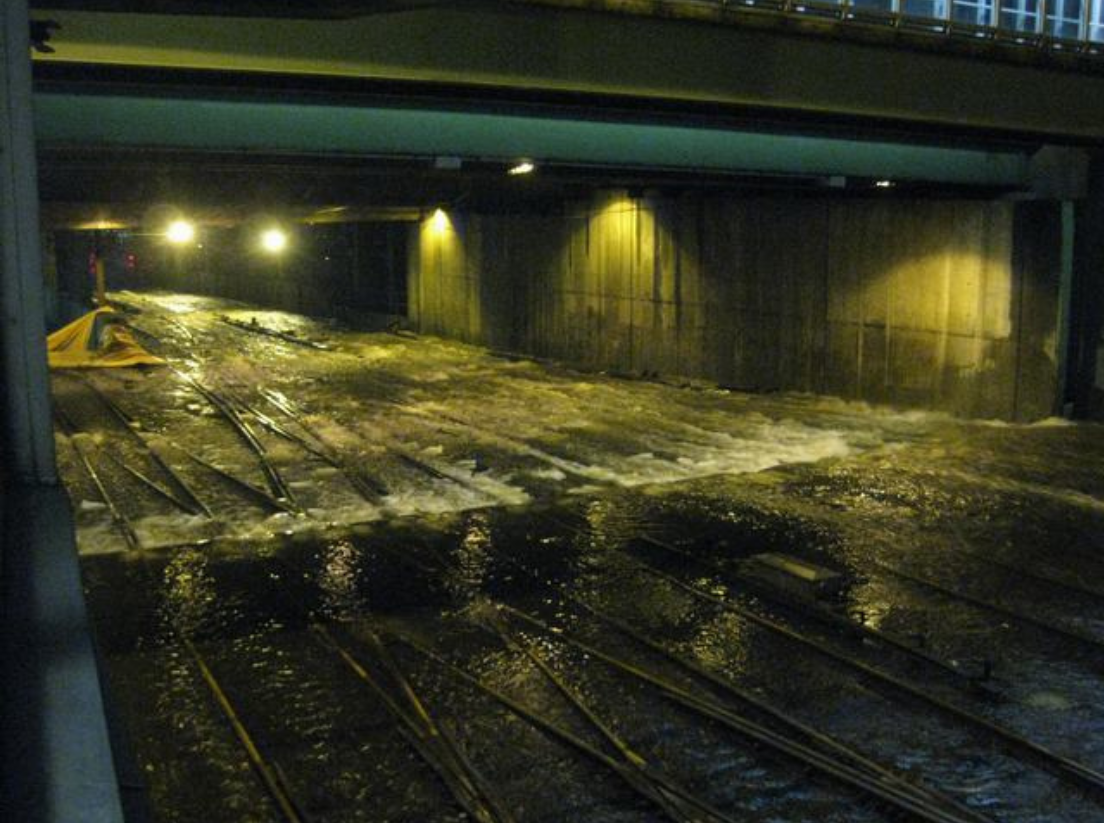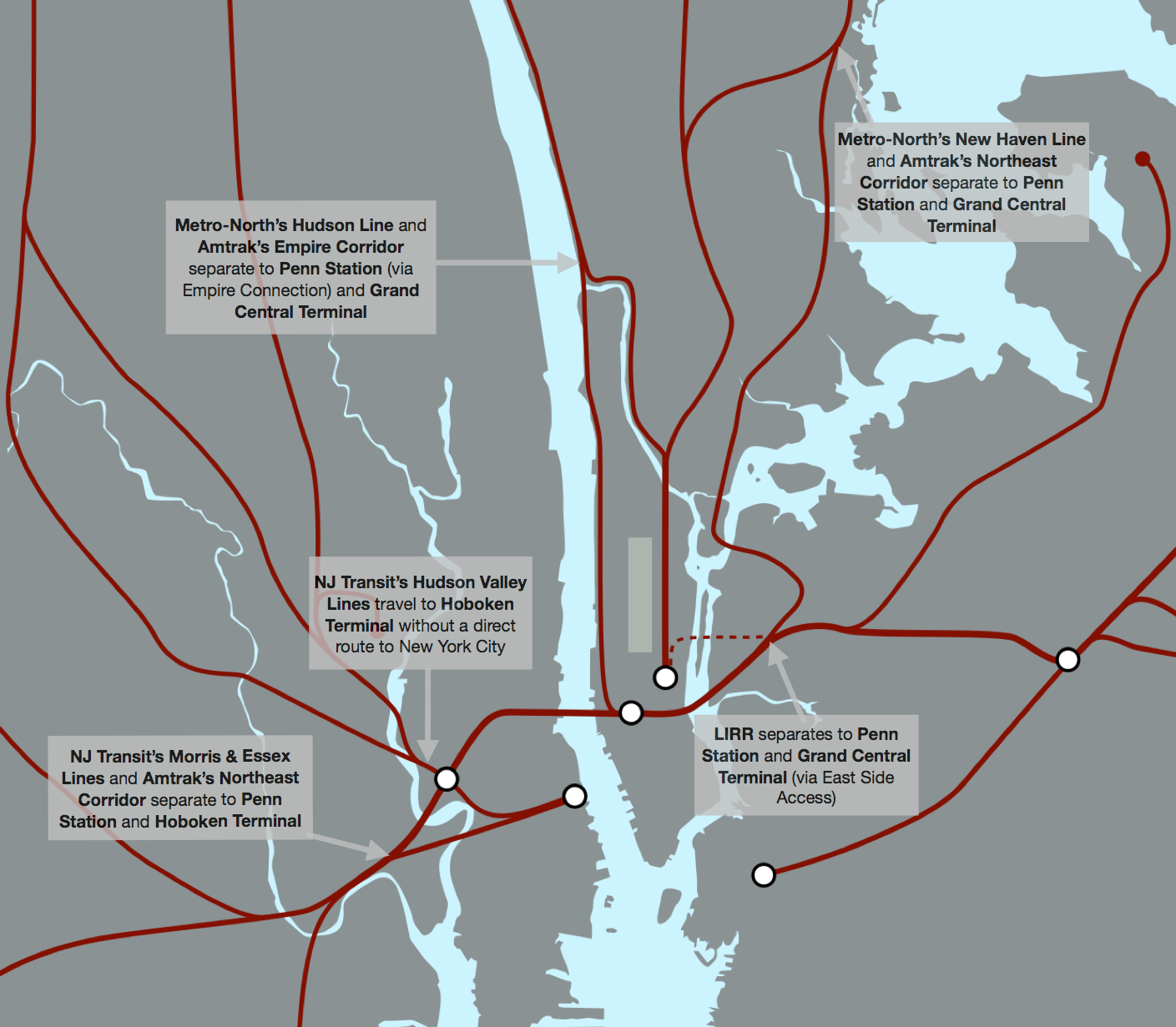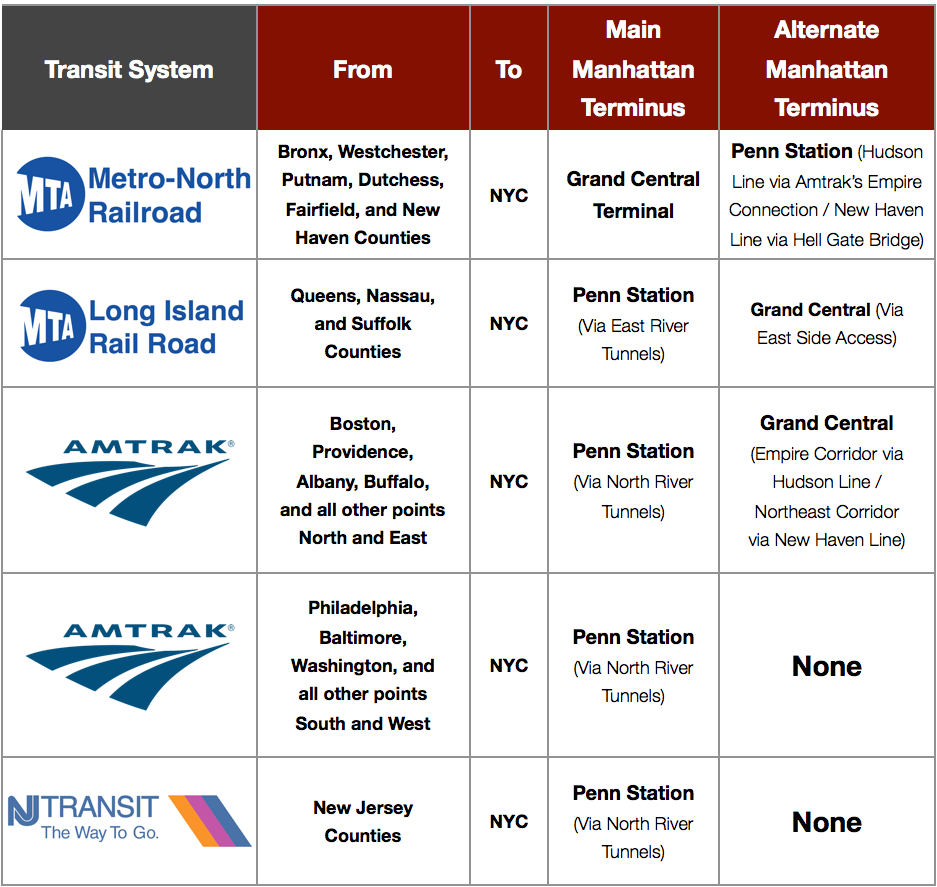Expanding Our Transit Networks After Sandy
On October 29, 2012, Hurricane Sandy swept through the metropolitan region, devastating its public transportation networks. Commuter rail and subway lines flooded and lost power, crippling mass transit throughout New York, New Jersey, and Connecticut. While most lines have restored service in the weeks following the storm, the temporary suspension of our mass transit systems revealed a lot about how we should invest in our future infrastructure.
Of course, certain aspects of our rail networks will always be vulnerable no matter what precautions are taken. Metro-North’s Hudson Line will always run along the Hudson River, posing a greater risk of flooding than lines that run further inland. Commuter lines that run through wooded areas are more vulnerable to falling trees and downed power lines than tracks that run through urban areas. Further, NJ Transit's main operations center, which suffered catastrophic damage during the storm, must reside in close proximity to large number of rail lines that converge in the meadowlands.
However, many vulnerabilities in our transit networks simply reflect the imprudent allocation of rail resources. Namely, commuter and regional rail lines originating south and west of Manhattan are significantly more vulnerable during natural disasters than lines originating north and east of Manhattan. This disparity results from simple math: for trains traveling on Amtrak’s Northeast Corridor or NJ Transit’s commuter rail lines, there are only two single-track tunnels that cross the Hudson River into Manhattan, but for trains crossing the East and Harlem Rivers into Manhattan, there are nine regional rail tracks.
Indeed, restoring the flooded cross-Hudson tunnels was a top priority during the post-storm recovery. But even though one of these tunnels reopened relatively quickly, the adage "don't place all your trains in one tunnel" rings especially true after Hurricane Sandy. As we enter the third week after the storm, regional rail service is still limited, highways and gas lines are swamped, and trains are so crowded that some NJ Transit riders have resorted to standing in the onboard bathrooms. The metropolitan region needs to expand the commuter and regional rail systems west of the Hudson River for a myriad of reasons, but none more important than to assure that when disaster strikes next, Amtrak and NJ Transit will have more than just a single path to Manhattan.
The obvious start is to increase the number of tracks crossing the Hudson River. During Hurricane Sandy, while two of Long Island Rail Road’s tunnels flooded, two additional tunnels were left unscathed, allowing for service to recover quickly. Simply adding new tunnels, however, is not enough. We must also diversify the placement of these new rail crossings. Both Metro-North Railroad and Amtrak (from points north and east) are able to terminate in either Penn Station or Grand Central Terminal due to the separation of lines approaching the East and Harlem Rivers. Had Hurricane Sandy completely wiped out Amtrak’s passage to Penn Station, trains would still be able to terminate at Grand Central (as they did until 1991). Similarly, when the MTA’s East Side Access project is completed in 2019, Long Island Rail Road trains will also be able to terminate at Grand Central. Finally, we need to significantly increase the platform and track capacity in Manhattan to allow for the safe diversion of rail resources during emergencies. There is no use rerouting service if there is no space to absorb the additional trains.
The best way to comprehensively address these challenges is to construct a new transit hub in Manhattan, separate and apart from Penn Station and Grand Central Terminal, to serve NJ Transit and Amtrak. It has been over one hundred years since New York City constructed a new train terminal and the region cannot afford to kick the train down the track any further. The suspension of commuter rail after Hurricane Sandy revealed just how much we depend on mass transit networks to transport us quickly and efficiently throughout the tri-state area. Without a new Manhattan transit hub, west-of-the-Hudson rail lines will continue to become more vulnerable as New Jersey population grows and rail ridership increases.
Recently, Amtrak has put forth its “Gateway Project,” which proposes building a ten-mile, two-track tunnel from New Jersey to an annex beneath Penn Station. However, the “Gateway Project,” fails to address a single one of our transportation networks’ vulnerabilities in light of the recent superstorm. Amtrak’s plans fail to markedly increase cross-Hudson train capacity, fail to add significant platform and trackage capacity within Manhattan, and fail to add alternative routes for Amtrak and NJ Transit trains in case of emergency. Amtrak’s “Gateway Project” would also cost over $15 billion over the next fifteen years and would require the demolition of private commercial and residential buildings next to Penn Station.
Real Transit believes that The Hudson Terminal Plan, which proposes extending four tracks from Hoboken, NJ to a new train terminal in Manhattan, is the most comprehensive plan to address the problems facing our transportation infrastructure in the future. Where Amtrak’s Gateway Project reflects complacency, The Hudson Terminal Plan takes creative measures to ensure that the metropolitan region will continue to lead the world in efficient and safe mass transit service.
.
Comparison of Transit System Alternatives
In the weeks following any unexpected disaster, the public tends to refocus their efforts, if not momentarily, on the problems that revealed themselves during the devastation. Hurricane Sandy’s destructive force should serve as a wake up call to reinvigorate investment in the metropolitan region’s already outdated and overused transportation infrastructure. We need to expand our New Jersey rail lines across the Hudson River in order to provide alternative routes to Manhattan. We need to build a new premiere transit hub the way New York used to build them, with dozens of new tracks and platforms in an independent structure instead of just a handful of tracks in a sub-basement of Penn Station. And while there are real challenges in terms of engineering, financing, and political drive, the time to build is now!







